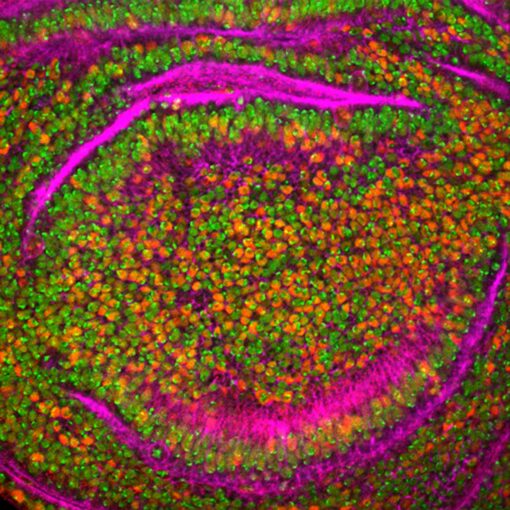CSW is pleased to announce that Dr. Stuart Licht, Dean’s Research Professor at George Washington University, is the 2016 Hillebrand Prize recipient. Dr. Licht will accept the award, and be the featured speaker at the March CSW meeting on Thursday, March 23. Meeting logistics can be found on the next page.
Biography
Stuart Licht is an electrochemist and environmental chemist with ~400 papers and patents focused on sustainability or fundamental chemistry, including a variety of studies published in Science and Nature. Today he is a Dean’s Research Professor in the Department of Chemistry at George Washington University. Stuart Licht served as a Program Director in the Chemistry Division of the National Science Foundation. An early pioneer in the field of photoelectrochemistry, Licht helped establish basic principles of the field as well as highest efficiency photoelectrochemical solar cells. His principles of STEP (solar thermal electrochemical processes) have led to the demonstration of the highest solar conversion of hydrogen, methane, and syngas fuels from sunlight, air, and water, as well as STEP CO2-free syntheses of ammonia, iron & steel, cement, and organics. His research group has helped establish the principles of multiple electron per molecule charge storage, including the unusual 11 electron VB2, and the hexavalent “super-iron,” and molten air batteries. Licht has broadened the foundation of understanding of a wide range of fundamental physical, analytical, and environmental electrochemical phenomena ranging from generation/collection microelectrochemistry, to fundamentals of speciation and water purification, and recently introduced a process to remove the greenhouse gas carbon dioxide to mitigate climate change by its transformation to carbon nanotubes. Recognitions include Licht’s BASF 150th Anniversary Electrochemical Storage Award, the Electrochemical Society Energy Technology Research Award, the Alcoa Research Award, GWU’s Trachtenberg Scholarship Award, the Gustella Award of the Technion, and Clark’s Carlson Endowed Chair in Chemistry.
Speaker Abstract: Diamonds from the Sky to Mitigate Climate Change: Incentivized greenhouse gas removal by its transformation to valuable commodities
As the levels of carbon dioxide increase in the Earth’s atmosphere, this greenhouse gas’s effects on climate change, including species extinction, flooding, draught, famine, and economic disruption become increasingly apparent. An incentive to remove CO2 is provided by a low energy, low cost, high-yield conversion to valuable products such as carbon nanotubes. Displaying superior strength, conductivity, flexibility, and durability, carbon nanotube (CNT) applications had been limited due to the cost intensive complexities of their synthesis. An inexpensive source of CNTs made from carbon dioxide will facilitate the rate of its adoption as an important societal resource for the building, aerospace, transportation, renewable energy, sporting, and consumer electronics industries, while concurrently consuming carbon dioxide. We present an inexpensive, high-yield and scalable synthesis of CNTs.
We show a new, unexpected chemistry for the effective capture of CO2 and its transformation at high yield and low energy, by dissolution in a molten carbonate electrolyte, and electrolysis splitting it to carbon nanotubes and oxygen.1-7 The CO2 reactant is directly absorbed from air (without the need for pre-concentration), or can be used and removed from industrial, home, or transportation emissions.
We show that common metals act as CNT nucleation sites in molten media to efficiently drive the high-yield electrolytic conversion of CO2 dissolved in molten carbonates to CNTs. We accomplish this by electrochemically reducing CO2 on steel electrodes in a molten carbonate electrolyte. The CNT structure is tuned by controlling the electrolysis conditions, such as the addition of trace common metals to act as CNF nucleation sites, the composition of the carbonate electrolyte, and the control of temperature and current density. Upward scalability of the process is demonstrated over several orders of magnitude.
The Licht group at GW University is in the midst of the semifinals of the Carbon XPrize (we are the C2CNF team at carbon.xprize.org), a global competition to demonstrate the most valuable product from the CO2 emissions of fossil fuel power plants. Our goal is to transform CO2 from a pollutant to a desired resource. Molten carbonate electrolysis production is significantly less expensive than contemporary CVD and polymer pulling methods to produce carbon nanotubes or nanofibers, and uses CO2, rather than organometallics or polymers, as the reactant. An inexpensive source of CNTs has a large demand as a preferred, lighter weight, stronger replacements to metals and plastics, which (in addition to the battery, nanoelectronics, and catalysis applications) can provide a large market to mitigate anthropogenic carbon dioxide.
1Ren, Li, Lau, Gonzalez-Urbina, Licht, One-pot synthesis of carbon nanofibers from CO2,
Nano Letters, 15, 6142 (2015).
2Ren, Lau, Lefler, S. Licht, The minimum electrolytic energy needed to convert carbon dioxide by electrolysis in carbonate melts, J. Phys. Chem., C, 119, 23342 (2015).
3Licht, Douglas, Ren, Carter, Lefler, Pint, Carbon Nanotubes Produced from Ambient Carbon Dioxide for Environmentally Sustainable Lithium-Ion & Sodium-Ion Battery Anodes, ACS Central Science, 2, 162 (2015).
4Ren, Lau, Lefler, Licht, The minimum electrolytic energy needed to convert carbon dioxide by electrolysis in carbonate melts, J. Phys. Chem., C, 119, 23342 (2015).
5Lau, Dey, Licht, Thermodynamic assessment of CO2 to carbon nanofiber transformation for carbon sequestration in a combined cycle gas or a coal power plant, Energy Conservation and Management, 122, 400 (2016).
6Wu, Li, Ji, Liu, Li, Yuan, Zhang, Ren, Lefler, Wang, Licht, One-Pot Synthesis of Nanostructured Carbon Material from Carbon Dioxide via Electrolysis in Molten Carbonate Salts, Carbon, 6, 27760 (2016).
7Ren, Licht, Tracking airborne CO2mitigation and low cost transformation into valuable carbon nanotubes, Scientific Reports, 106, 208 (2016).
Meeting Logistics
Date: Thursday, March 23
Time: 6:00 p.m. Check-in and social hour
6:30 p.m. Dinner
7:15 p.m. Presentation
Cost: $28 (Members and guests) / $14 (Students)
Location: ACS Headquarters, Marvel Hall, 1155 16th St., N.W., Washington, DC
Menu: Prime Rib w/au jus, twice-baked potatoes, tossed salad, artisan bread. Vegetarian option: Cheese manicotti, grilled vegetables, tossed salad, garlic bread. Dessert: mini cookies and fresh fruit.
Parking: Parking is available in nearby commercial parking garages.
Metro: Blue/Orange/Silver Line: McPherson Square or Farragut West. Red Line: Farragut North.
RSVP by noon Tuesday, March 21 to csw@acs.org or by phone (messages only: 202-659-2650)
Please provide the names in your party when you RSVP, and indicate if you prefer the vegetarian option. The public is invited to attend. You may attend the talk only, but reservations are appreciated. Those who make a dinner reservation, but are unable to attend, should send a check for the cost of their meal to the CSW office.



